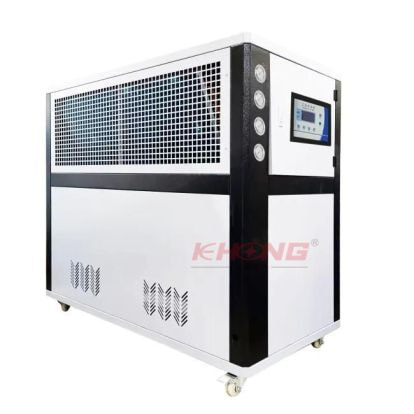Industrial refrigeration refers to the process of cooling large-scale systems and spaces to preserve products, maintain low temperatures, and support various industrial operations. It's commonly used in food processing, chemical manufacturing, pharmaceutical production, and storage facilities.
Industrial refrigeration works by removing heat from a space or substance and transferring it to another area, typically using a refrigeration cycle. This cycle involves a series of processes that absorb heat at a low temperature and reject it at a higher temperature.

The main components of an industrial refrigeration system include the evaporator, compressor, condenser, and expansion valve. Each plays a crucial role in the refrigeration cycle:
Evaporator: Absorbs heat from the refrigerated space, causing the refrigerant to evaporate.
Compressor: Raises the pressure and temperature of the refrigerant vapor.
Condenser: Releases the absorbed heat to the surroundings, causing the refrigerant to condense back into a liquid.
Expansion Valve: Reduces the pressure of the refrigerant, allowing it to cool before returning to the evaporator.
The refrigeration cycle consists of four main stages:
Evaporation: The refrigerant in the evaporator absorbs heat from the space or substance being cooled, evaporating from a liquid to a vapor.
Compression: The vaporized refrigerant is compressed by the compressor, increasing its pressure and temperature.
Condensation: The high-pressure, high-temperature refrigerant vapor flows to the condenser, where it releases heat to the surroundings and condenses back into a liquid.
Expansion: The liquid refrigerant passes through the expansion valve, where its pressure and temperature drop, allowing it to absorb heat again in the evaporator.
Several types of refrigerants are used in industrial refrigeration systems, each with specific properties and applications. Common refrigerants include ammonia (R717), carbon dioxide (R744), and various hydrofluorocarbons (HFCs). Ammonia is widely used due to its high efficiency and low cost, while carbon dioxide is favored for its low environmental impact.
Temperature control in industrial refrigeration systems is achieved through sensors and thermostats that monitor and regulate the temperature within the desired range. The system adjusts the flow of refrigerant and the operation of the compressor to maintain consistent cooling performance.
Industrial refrigeration offers several benefits:
Preservation: Maintains the quality and safety of perishable goods by slowing down spoilage and bacterial growth.
Energy Efficiency: Modern systems are designed to minimize energy consumption and operating costs.
Scalability: Can be tailored to suit a wide range of industrial applications, from small storage units to large processing facilities.
Suggested reading:Reliability: Provides consistent and dependable cooling performance, crucial for industrial operations.
Industrial refrigeration is used in various industries for different purposes:
Food and Beverage: Ensures the freshness and safety of perishable goods during processing, storage, and transportation.
Chemical and Pharmaceutical: Maintains precise temperature conditions for the production and storage of sensitive materials.
HVAC Systems: Supports large-scale air conditioning and climate control in commercial and industrial buildings.
Cold Storage: Provides low-temperature environments for the long-term storage of products.
Regular maintenance is essential to ensure the efficient and reliable operation of industrial refrigeration systems. Key maintenance tasks include:
Inspection: Regularly checking components for wear and tear, leaks, and other issues.
Cleaning: Keeping evaporators, condensers, and other parts free from dirt and debris.
Lubrication: Ensuring that moving parts are properly lubricated to reduce friction and wear.
Calibration: Verifying that sensors and controls are accurately measuring and regulating temperatures.
Modern industrial refrigeration systems are designed with energy efficiency and environmental impact in mind. Using eco-friendly refrigerants, advanced control systems, and regular maintenance helps minimize energy consumption and reduce greenhouse gas emissions.
Industrial refrigeration is a vital technology that supports numerous industries by providing reliable and efficient cooling solutions. Understanding the components, operation, and maintenance of these systems is essential for ensuring optimal performance and sustainability in various industrial applications.
Previous
None
Next
None
Comments
Please Join Us to post.
0